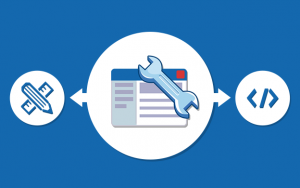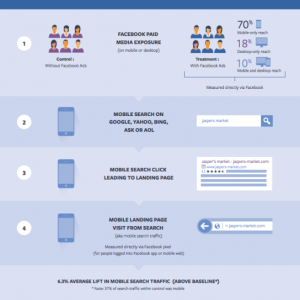AI hype is leading to rapid adoption, but what happens when understanding lags behind?
Change is constant, but one thing is certain: hype cycles grab attention and influence budgets, for better or worse.
Artificial intelligence (AI) is just the latest enterprise fixation, but it won’t be the last. Additionally, AI is too broad a term to focus on, with generative AI taking much of the oxygen in conversations, yet with other forms of artificial intelligence, such as predictive analytics and robotic process automation (RPA), having a larger existing footprint.
Unlike other recently hyped technologies (e.g., the metaverse), greater AI investments have real and near-immediate potential to provide ROI. Yet, as with any trend, fad or legitimate area on which enterprise organizations should focus, there is a knowledge gap between myth and reality. This gap extends all the way from leadership, and it has the potential to very quickly add to more disillusionment with digital transformation. It also creates category leaders from organizations that extract maximum value from AI.
What happens when a technology like AI outpaces leaders’ understanding of its potential, its current application and its potential for harm? Let’s examine how rushing into an AI-driven future without fully understanding it can impact businesses, employees and customers.
When usage outpaces understanding
While jumping on the bandwagon is nothing new, there are still significant impacts to organizations making significant investments in artificial intelligence-based technologies that are mostly new areas of exploration.
By late 2023, 60% of leaders believed AI and machine learning would have a major impact, according to a CMSWire survey (registration required). A McKinsey study went further, with 75% of respondents predicting generative AI would soon disrupt their industry.
In 2023, IDC estimated AI spending to be $ 150 billion, with projections to exceed $ 300 billion by 2026. McKinsey’s Global Survey on AI also revealed that over 65% of respondents reported regular use of generative AI, nearly doubling from the previous survey 10 months earlier.
It’s clear that the AI hype is driving action, but the rush to adopt it is exposing several gaps, starting with a lack of understanding.
The knowledge gap
Despite the follow-through on the recent hype, it doesn’t appear that many businesses truly understand the potential opportunities and challenges of AI, let alone the basics of how these technologies work.
A study of 5,000 consumers by Savanta and Pega found that while 93% claimed to understand AI well, and only 3% admitted they didn’t know about generative AI, there are still significant knowledge gaps.
For example, 80% of respondents thought AI has only been used in business for five years or less, even though it’s been around for decades. Additionally, 65% couldn’t correctly define generative AI or explain how it works. This lack of understanding becomes critical when companies rush to adopt AI without fully grasping its implications. Let’s explore three areas where this is evident.
Premature investments end in failed initiatives
Documentation of the failure rate of digital transformations is plentiful. Generally, this failure rate does not appear to have been curtailed by introducing AI into the mix. The same Savanta study revealed that nearly two-thirds of respondents (61%) say they have had a failed implementation of AI-based tools.
Dig deeper: 67% of marketers say lack of training is primary barrier to AI adoption
Yet despite this, a study from Deloitte shows that 30% of enterprise executives responding cited challenges in measuring and providing business value in AI initiatives as being one of their top three challenges. The most-cited challenge in that same study was implementation challenges.
The wrong priorities are made
When adoption outpaces understanding, effort and investment are placed in the wrong places. There are some legitimate reasons for those in the enterprise to have concerns about AI adoption, including ethical issues, how human employees are treated and the actual long-term effectiveness are a few.
Up to 42% of respondents in the Savanta survey worry about AI taking their jobs, a fear supported by recent layoffs. A little over half (51%) have concerns about bias and transparency issues related to increased AI adoption.
All of these are valid concerns, reinforced by real-world examples and have been well documented. Yet, 40% of respondents in that same survey are also concerned about the potential enslavement of humanity by AI-powered robots.
Many are also being asked to do more with less. Gartner’s 2024 CMO Spend Survey shows that marketing budgets have fallen to 7.7% of revenue in 2024 compared to 9.1% in 2023, steadily falling from about 11% of revenue in the years immediately preceding the pandemic.
When asked how they will deal with this, nearly two-thirds of respondents said that, despite lacking the budget to execute their strategies in 2024, they are hopeful that generative AI can make up some of the gaps. That is a lot of hope for a technology that many don’t seem to fully understand, as the Savanta survey revealed that nearly half of respondents (47%) are concerned about trusting the success of their brand to AI.
Setting priorities can be challenging in an organization where many people fear losing their jobs, doubt AI’s effectiveness and worry about a Terminator-style apocalypse. We will have to wait and see how these concerns play out, but compromises are likely. Mistakes are inevitable due to the widespread lack of understanding of AI’s real-world benefits and drawbacks. The current success rate of AI initiatives shows this clearly.
The customer loses
Finally, when the race to adoption outpaces understanding of AI, the end customer also loses. While a direct correlation has not yet been made between AI adoption and the scores, is it any surprise that Forrester’s recently announced 2024 CX Index had its biggest decrease (1.6%) between 2024 and 2023? Many factors can affect these numbers, but given the lack of understanding of AI and numerous failed investments, customers likely suffer from these AI-related misunderstandings and mistakes.
Consumers aren’t averse to using AI technologies but expect these tools to offer benefits, not simply cost savings, for the brands adopting them. Up to 80% of customers surveyed in 2023 by Verint expect interactions with an AI-powered chatbot to have at least one benefit.
The goal of using more AI in businesses is to improve efficiency, speed and personalization, which should benefit customers. However, to achieve these benefits, brands may need to experience more failures in their AI projects. More analysis should be done on AI’s relative impact on the success rate of digital transformations and the drop in customer satisfaction.
The silver lining: AI works when applied well
The opportunity remains for brands that can marry understanding with successful implementation to achieve improvements both internally with their operations and externally with more satisfied and loyal customers.
Research shows that AI utilization improves both internal productivity and customer satisfaction. A 2020 study from McKinsey estimated that AI technologies can potentially deliver up to $ 1 trillion of additional value to businesses each year, particularly in customer service. More recent study results from researchers at MIT and Stanford show both of these things: a 14% productivity increase by internal teams and a higher Net Promoter Score (NPS) with end customers.
With this potential, the door is open to brands that can overcome the challenges — some real and others overestimated — and balance hype with measured adoption. Better education, more strategic thinking and a focus on the customer will characterize those companies that can take the opportunity to adopt AI in a meaningful and measurable way in the months and years to come.
The post Why brands must bridge the knowledge gap in AI adoption appeared first on MarTech.
MarTech(10)
Report Post





